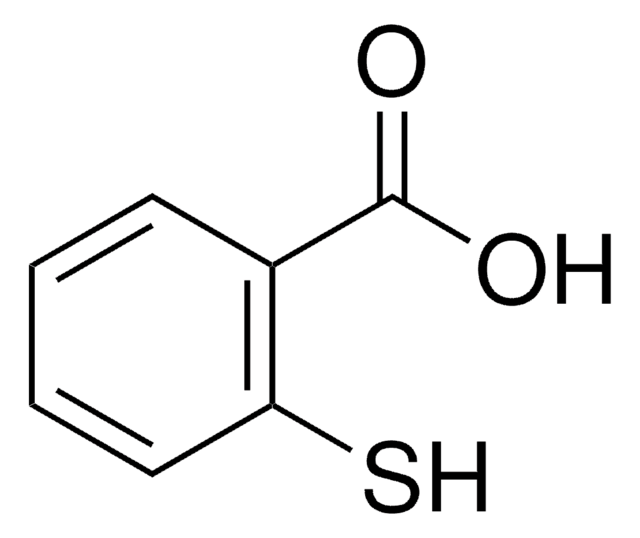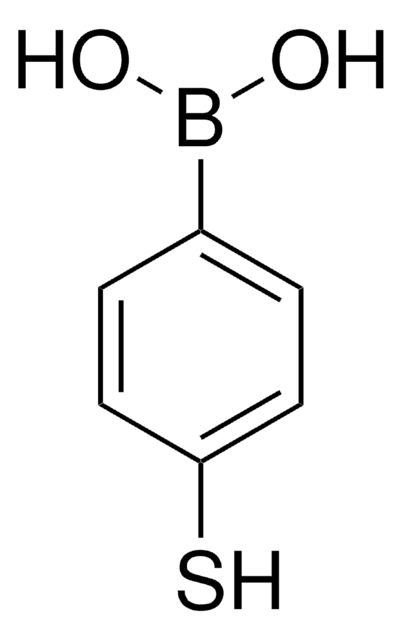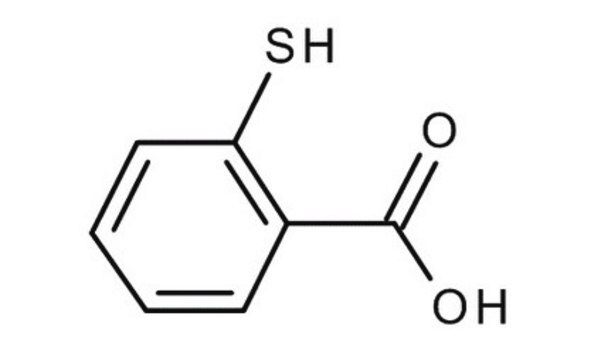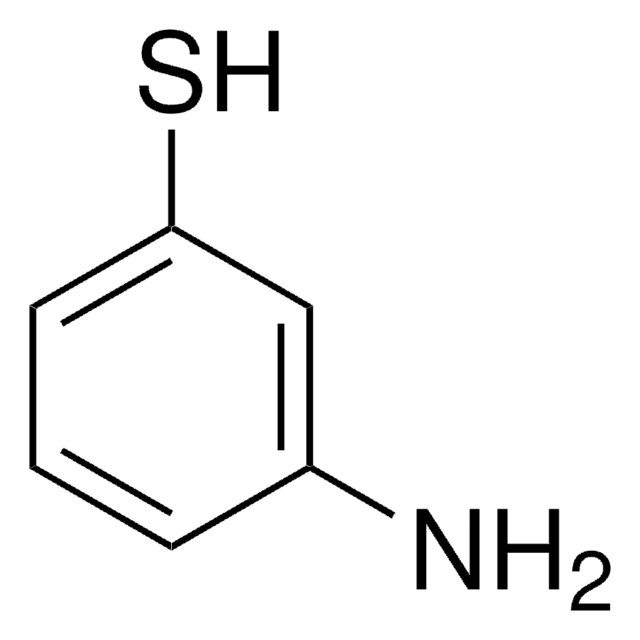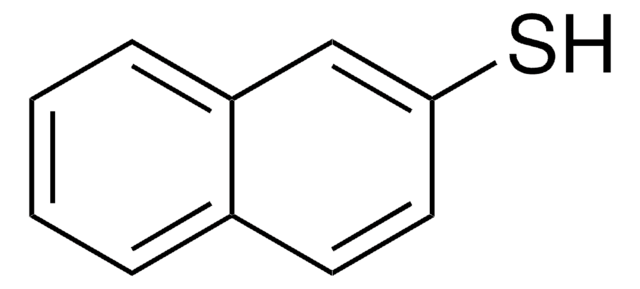662534
4-Mercaptobenzoic acid
technical grade, 90%
Synonym(s):
4-Carboxybenzenethiol, 4-Carboxythiophenol, 4-Mercaptobenzoic acid, p-Carboxybenzenethiol, p-Mercaptobenzoic acid
About This Item
Recommended Products
grade
technical grade
Quality Level
Assay
90%
form
solid
mp
215-224 °C (lit.)
functional group
carboxylic acid
SMILES string
OC(=O)c1ccc(S)cc1
InChI
1S/C7H6O2S/c8-7(9)5-1-3-6(10)4-2-5/h1-4,10H,(H,8,9)
InChI key
LMJXSOYPAOSIPZ-UHFFFAOYSA-N
Looking for similar products? Visit Product Comparison Guide
General description
Application
- SERS substrate for food adulteration detection: 4-Mercaptobenzoic acid was employed in the layer-by-layer biopolymer assembly for the in situ fabrication of AuNP plasmonic paper, serving as a SERS substrate useful in detecting food adulteration (Viriyakitpattana et al., 2024).
- Development of magneto-plasmonic nanoparticles: Research highlighted the use of 4-Mercaptobenzoic acid in the multiwavelength SERS of magneto-plasmonic nanoparticles, obtained through combined laser ablation and solvothermal methods, showing versatility in nanoparticle synthesis (Talaikis et al., 2023).
Signal Word
Warning
Hazard Statements
Precautionary Statements
Hazard Classifications
Eye Irrit. 2 - Skin Irrit. 2 - STOT SE 3
Target Organs
Respiratory system
Storage Class Code
11 - Combustible Solids
WGK
WGK 3
Flash Point(F)
Not applicable
Flash Point(C)
Not applicable
Personal Protective Equipment
Choose from one of the most recent versions:
Already Own This Product?
Find documentation for the products that you have recently purchased in the Document Library.
Customers Also Viewed
Global Trade Item Number
| SKU | GTIN |
|---|---|
| 662534-25G | 4061832734163 |
| 662534-5G | 4061832734170 |
Our team of scientists has experience in all areas of research including Life Science, Material Science, Chemical Synthesis, Chromatography, Analytical and many others.
Contact Technical Service



